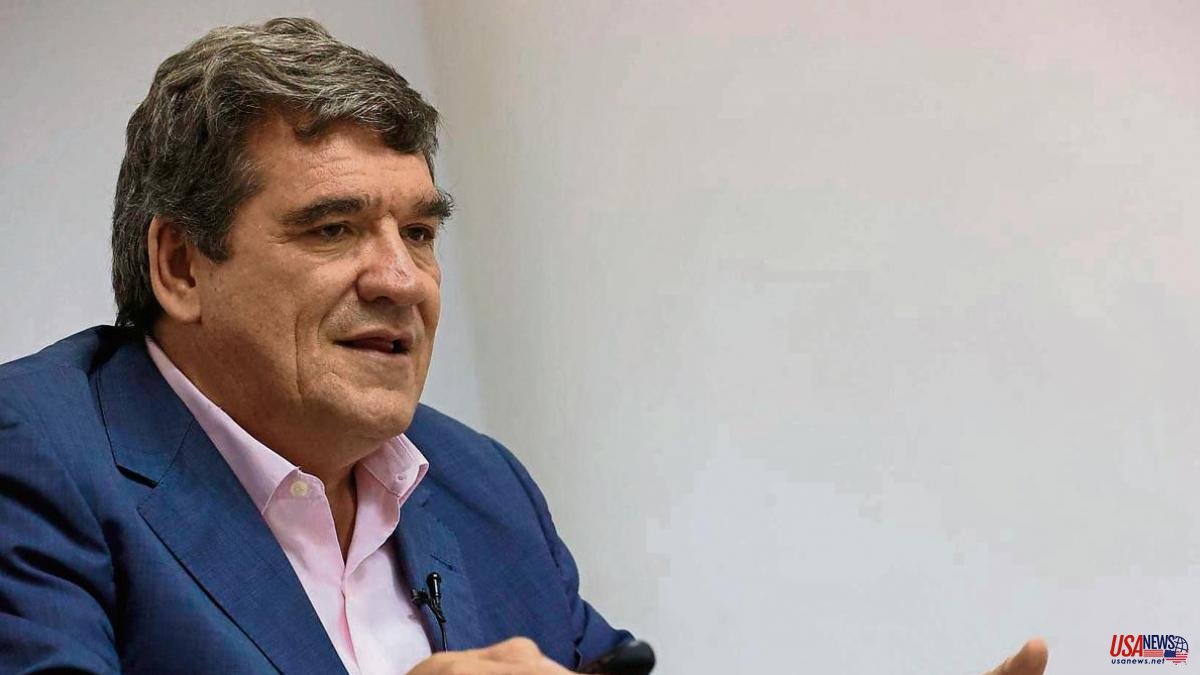Minister Escrivá has managed to carry out his revolution in the self-employed contribution system. It is not the radical change that he initially proposed, with a 9-year term that triggered the contribution of self-employed workers with more income, but rather it is reduced to the 2023-2024 period, and with a more nuanced change. But the fundamental transformation is established, the self-employed will contribute based on their income, and not by free choice as is the case now, which leads to 80% of self-employed workers paying the minimum fee. Minimum contribution that entails reduced benefits, much lower than for workers in the general scheme, and which also calls into question the sustainability of the system. The agreement provides that the self-employed will pay fees of between 200 and 590 euros per month.
After months of negotiations, the preliminary agreement has been achieved, with several self-employed associations that have already given their approval and in the absence of the formal approval of ATA and the employers, who will decide this morning in an executive committee of the CEOE. Except for last-minute surprises, there will be a green light and with it, the Minister of Inclusion and Social Security, José Luis Escrivá, will achieve the transformation of this contribution system, which is one of the conditions contemplated in the recovery plan, and will achieve it by consensus.
The final design contemplates reaching the definitive model in three years, with progressive annual cuts. The group will be divided into 15 sections, depending on their income, ranging from those who earn less than 670 euros per month to those who earn more than 6,000 euros.
In recent days, Escrivá has lowered the fees of workers with less income to add Uatae, the association linked to CC.OO, and has succeeded. The general secretary of this organization, María José Landaburu, said yesterday that "we have managed to lower the quotas for the people who have the most difficulties, in the first and second tranches, and improve the benefits for cessation of activity for everyone" .
Shortly after, the blessing of the UPTA, linked to the UGT, arrived. It was no surprise. In the last few days she had already shown his predisposition. "We say yes to a fairer, more balanced and supportive system, which will benefit thousands of self-employed, the contributors who earn the least," said its secretary general, Eduardo Abad.
For its part, from ATA they pointed out that there were "pending fringes", although in recent weeks they have already achieved a large part of their claims, by limiting the increase in quotas for the self-employed with more income. These fringes are not related to the sections or the quotas, but other aspects. There are seven points of disagreement. For example, ATA does not accept that the 200,000 self-employed in multiple activities contribute for cessation of activity and can never collect this benefit. Another point of discrepancy is that when the regularization of the tax agency arrives, the self-employed person has only one month to pay the administration and instead, the administration has five months to proceed with the refund in case they have contributed more. Yesterday these fringes were still being negotiated before the executive committee of the CEOE this morning, which is the one that should give it the go-ahead.
In this way, the minimum quota for the self-employed will be 230 euros in 2023, to decrease to 225 euros in 2024 and 200 euros in 2025. On the other hand, the maximum quota remains intact with respect to the last proposal, standing at 500 euros in 2023, 530 euros in 2024 and 590 euros in 2025.
In general terms, the point is that the quota for the self-employed with incomes of less than 1,300 euros is lowered, it remains the same for those who earn between 1,300 and 1,700 euros, and it is increased for those who earn more than 1,700 euros. All staggered in 15 sections that the self-employed person must choose based on his income. You can change the section up to six times per year, and in the end, it will be the Tax Agency that will compare your declaration with your real income, to proceed with a possible refund or an extra contribution claim.
On the other hand, the self-employed may opt for the reduced rate in the first year of activity, with a fee of 80 euros, which may be extended for an additional year in the case of those with less income.
To determine the corresponding contribution bracket, the real income of the employee will be added, and 7% of generic expenses that will not need to be specified will be deducted. In some cases, this percentage is reduced to 3%.













